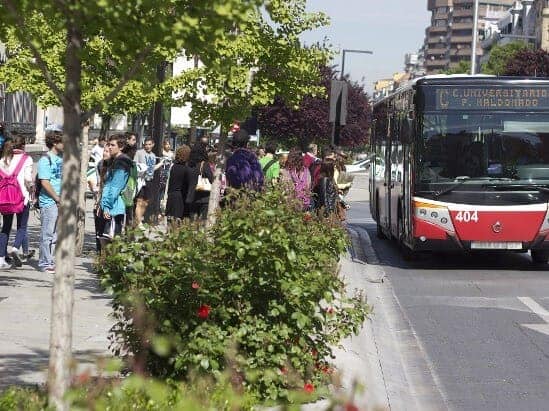Cognitive performance of adolescent girls who walk to school is better than that of girls who travel by bus or car. Moreover, cognitive performance is also better in girls who take more than 15 minutes than in those who live closer and have a shorter walk to school.
These are some of the conclusions of a study published in Archives of Pediatrics & Adolescent Medicine. The results come from findings of the nationwide AVENA (Food and Assessment of the NutritionalStatus of Spanish Adolescents) study, in which the University of Granada has participated together with the Autonomous University of Madrid, University of Zaragoza and the Spanish National Research Council in Madrid. They constitute the first international study that associates mode of commuting to school and cognitive performance.
The authors analysed a sample of 1700 boys and girls aged between 13 and 18 years (808 boys and 892 girls) in five Spanish cities (Granada, Madrid, Murcia, Santander and Zaragoza).
They studied variables of mode of commuting to school, cognitive performance, anthropometrics—like body mass index and percentage of overweight and obesity—and participants’ extracurricular physical activity. They also gathered data on their families’ socio-economic status using the mother’s level of educational achievement (primary school, secondary school or university) and the type of school (state-funded or private) that participants attended.
Information on mode of commuting to school came from a question asking participants how they usually travelled to school and giving the following response options: on foot, by bicycle, car, bus or subway, motorcycle, and others. They were also asked how long the journey to school took them.
Cognitive performance was measured by applying the Spanish version of an educational ability test. Participants completed this standardized test that measures intelligence and the individual’s basic ability for learning. The test assesses command of language, speed in performing mathematical operations, and reasoning.
In adolescence, the plasticity of the brain is greatest. The researchers affirm that, during adolescence, “the plasticity of the brain is greater than at any other time of life, which makes it the opportune period to stimulate cognitive function”. However, paradoxically, adolescence is the time of life that sees the greatest decline in physical activity, and this is greater in girls. Therefore, the authors of the study think that “inactive adolescents could be missing out on a very important stimulus to improve their learning and cognitive performance”.
“Commuting to school on foot is a healthy daily habit, which contributes to keeping the adolescent active during the rest of the day and encourages them to participate in physical and sports activities. This boosts the expenditure of energy and, all in all, leads to a better state of health”, say Palma Chillón, researcher in the Department of Physical and Sports Education of the University of Granada, and David Martínez-Gómez, of the Department of Physical and Sports Education and Human Movement (Faculty of Teacher Training and Education) of the Autonomous University of Madrid, who have both participated in the study.


